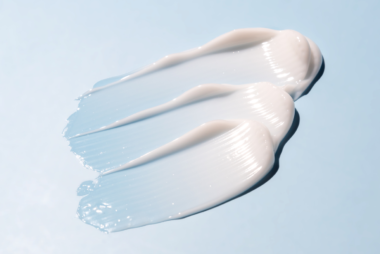Hydration is a non-negotiable step in any skincare routine. However, while moisturizing may seem straightforward, selecting the right product for your skin can be more complex than it appears. With options ranging from lotions and creams to gels, how do you determine which texture is best for your skin?
The answer lies in understanding how these formulas work and which skin types they’re best suited for. Whether you have dry, oily, sensitive, or combination skin, choosing a moisturizer with the right texture and ingredients can make all the difference in keeping your skin balanced and hydrated.
In this guide, we’ll break down the differences between gel, lotion, and cream moisturizers, helping you pinpoint the ideal match for your skin type and concerns. Plus, we’ll share expert tips on what to consider when choosing a moisturizer and recommend top products to keep your skin glowing all year long. Let’s dive in.
Why Are Moisturizers Important?
Moisturizing isn’t just an extra step in your skincare routine—it’s essential for maintaining a healthy, balanced complexion. Your skin needs consistent hydration to look and feel its best, and a good moisturizer helps achieve this.
One of the biggest benefits of using a moisturizer is its ability to reduce transepidermal water loss (TEWL). When TEWL is high, the skin becomes dry, tight, and more prone to irritation. However, regularly applying a moisturizer creates a protective barrier, locking in moisture and preventing dehydration.
Beyond hydration, moisturizers support overall skin health by soothing sensitivity, enhancing elasticity, and helping to improve signs of aging over time. However, not all formulas are created equal.
While key ingredients like hyaluronic acid, ceramides, and glycerin are essential in any good moisturizer, the formula’s texture also plays a crucial role in how well it hydrates and protects the skin. That’s why understanding the different textures available—and how they cater to various skin types—is just as important.
Understanding Moisturizer Textures
The texture of a moisturizer determines how well it absorbs, how long it keeps your skin hydrated, and whether it feels comfortable to wear throughout the day. Moisturizers vary in their water and oil content, resulting in three main types: gels, lotions, and creams. Let’s explore these textures in detail.
Gel Moisturizers
Gel moisturizers have a lightweight, watery consistency that absorbs quickly into the skin. They typically contain a high percentage of water, making them one of the most refreshing and fast-absorbing moisturizer options available. Many gel formulas provide hydration without leaving behind any greasy residue, making them perfect for those who prefer a breathable feel.
Because of their non-greasy finish, gel moisturizers are particularly beneficial for normal, oily, and acne-prone skin, providing a boost of hydration without clogging pores or triggering breakouts. Great options include:
Lotion Moisturizers
Lotions serve as a middle ground between gels and creams. They contain more emollients, giving them a creamier consistency that’s slightly thicker than gels but still absorbs easily. Lotions provide lasting hydration without feeling too heavy.
Formulas like the following are excellent for normal, dry, and combination skin, offering a rich yet non-greasy finish:
Cream Moisturizers
Cream moisturizers are the thickest and richest option, offering intense hydration for skin that needs extra moisture. They contain more emollients and occlusives, making them better at retaining moisture and protecting the skin barrier.
Their thicker consistency provides longer-lasting hydration and is especially effective at reducing TEWL. Top picks include:
How to Choose the Right Moisturizer Texture for Your Skin
Choosing the right moisturizer isn’t a one-size-fits-all decision. Your skin type, concerns, and personal preferences all play a role in determining which formula works best. Whether you need a lightweight gel for oily skin or a balanced lotion for combination skin, the key is to match the texture to your skin’s needs.
Step 1: Choose Your Preferred Texture
The first step is understanding the different textures and determining which works best for you. Various skincare brands offer multiple texture options, each designed for different skin types, so you can find a formula that suits your needs without compromising on personal preference.
Step 2: Identify Your Skin Type
Your skin type plays a major role in selecting the right moisturizer:
- Dry Skin: Opt for rich creams with thicker consistencies and high emollient content. Look for fragrance-free, non-comedogenic options with hydrating ingredients like hyaluronic acid and ceramides.
- Oily Skin: Avoid heavy creams, which can clog pores and trigger breakouts. Instead, choose lightweight gel moisturizers that hydrate without adding excess oil.
- Normal Skin: Hydration needs can change with seasons and age. Lotions work well for normal skin, but during colder months or with aging, richer creams may be necessary.
- Combination Skin: A mix of moisturizers may be beneficial—lighter gels or lotions for daytime and richer creams for night. Seasonal changes should also be considered.
- Sensitive Skin: If your skin is sensitive and dry, go for a gentle cream-based moisturizer. If it’s sensitive and oily, opt for a lightweight gel or lotion. Always choose formulas labeled as suitable for sensitive skin.
Step 3: Consider Your Primary Skin Concerns
Beyond hydration, consider other concerns such as signs of aging, blackheads, enlarged pores, discoloration, or irritation. A well-chosen moisturizer should not only provide hydration but also address your unique skin needs.
Final Thoughts
Finding the perfect moisturizer isn’t just about hydration—it’s about selecting the right texture to meet your skin’s demands. Whether you go for a gel, balanced lotion, or rich cream, your moisturizer should always match your skin type and concerns.
By understanding the differences between gel, lotion, and cream textures, you can create a skincare routine that keeps your skin healthy, comfortable, and glowing all year round.















